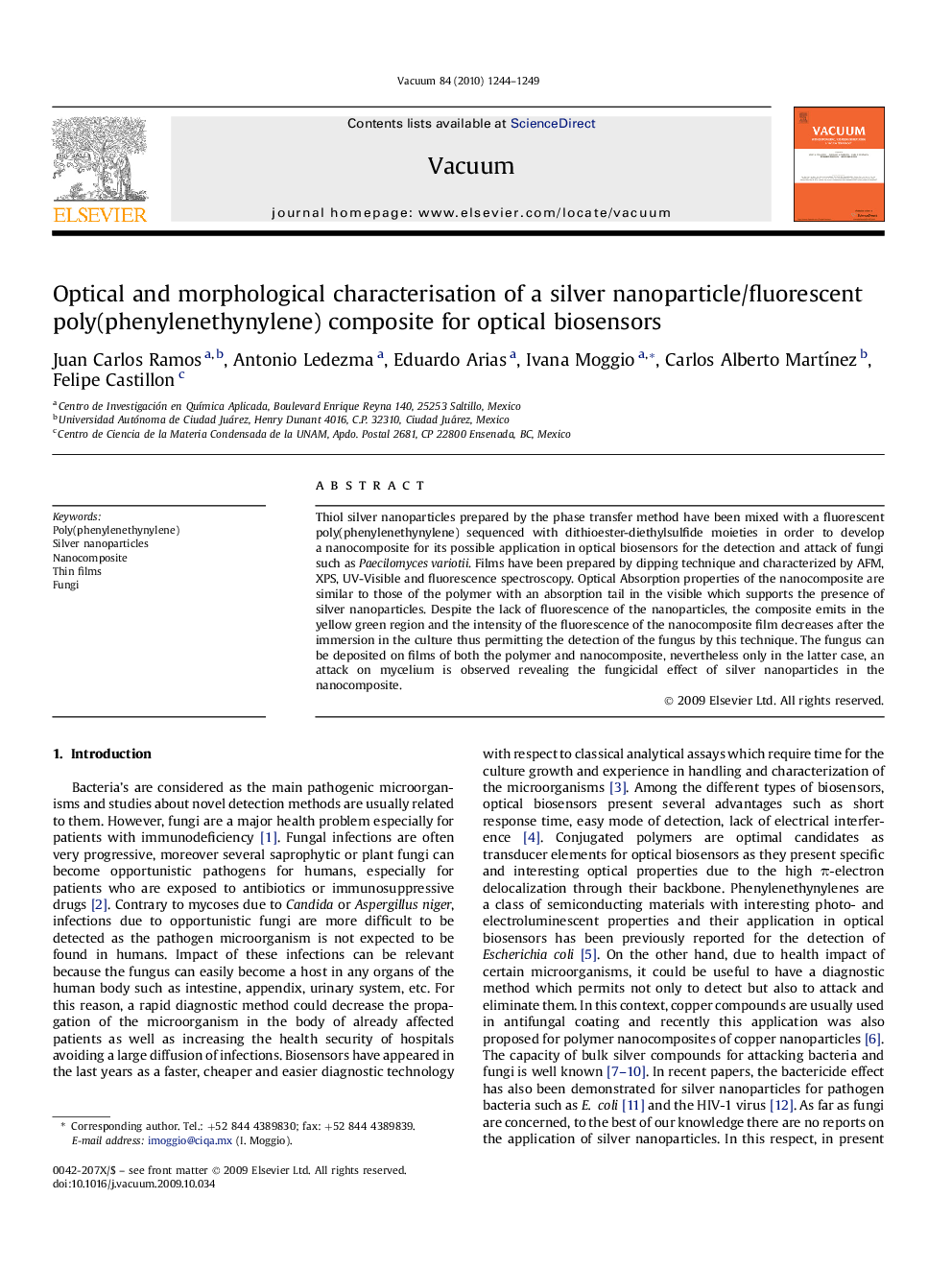| Article ID | Journal | Published Year | Pages | File Type |
|---|---|---|---|---|
| 1689291 | Vacuum | 2010 | 6 Pages |
Abstract
Thiol silver nanoparticles prepared by the phase transfer method have been mixed with a fluorescent poly(phenylenethynylene) sequenced with dithioester-diethylsulfide moieties in order to develop a nanocomposite for its possible application in optical biosensors for the detection and attack of fungi such as Paecilomyces variotii. Films have been prepared by dipping technique and characterized by AFM, XPS, UV-Visible and fluorescence spectroscopy. Optical Absorption properties of the nanocomposite are similar to those of the polymer with an absorption tail in the visible which supports the presence of silver nanoparticles. Despite the lack of fluorescence of the nanoparticles, the composite emits in the yellow green region and the intensity of the fluorescence of the nanocomposite film decreases after the immersion in the culture thus permitting the detection of the fungus by this technique. The fungus can be deposited on films of both the polymer and nanocomposite, nevertheless only in the latter case, an attack on mycelium is observed revealing the fungicidal effect of silver nanoparticles in the nanocomposite.
Related Topics
Physical Sciences and Engineering
Materials Science
Surfaces, Coatings and Films
Authors
Juan Carlos Ramos, Antonio Ledezma, Eduardo Arias, Ivana Moggio, Carlos Alberto MartÃnez, Felipe Castillon,
